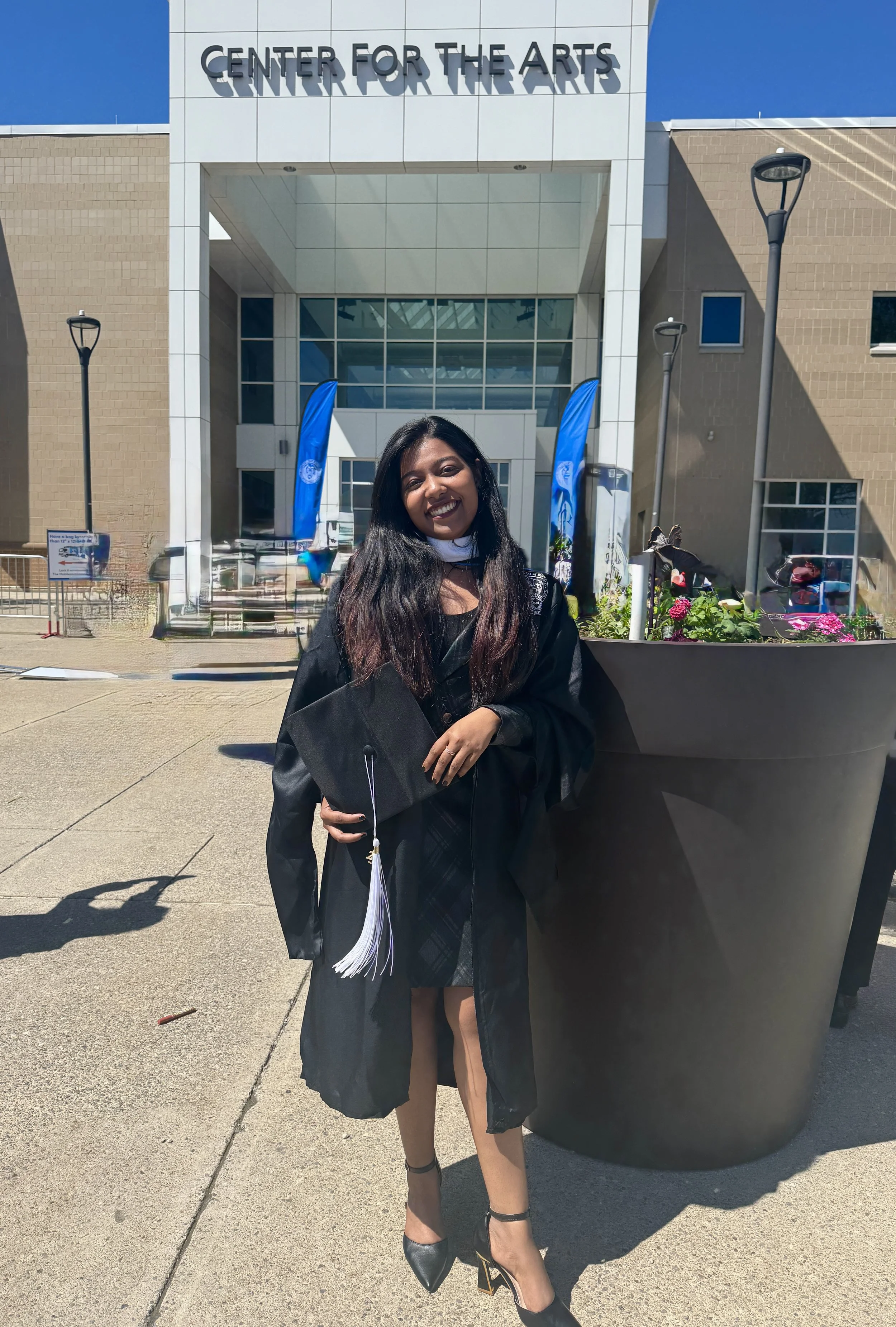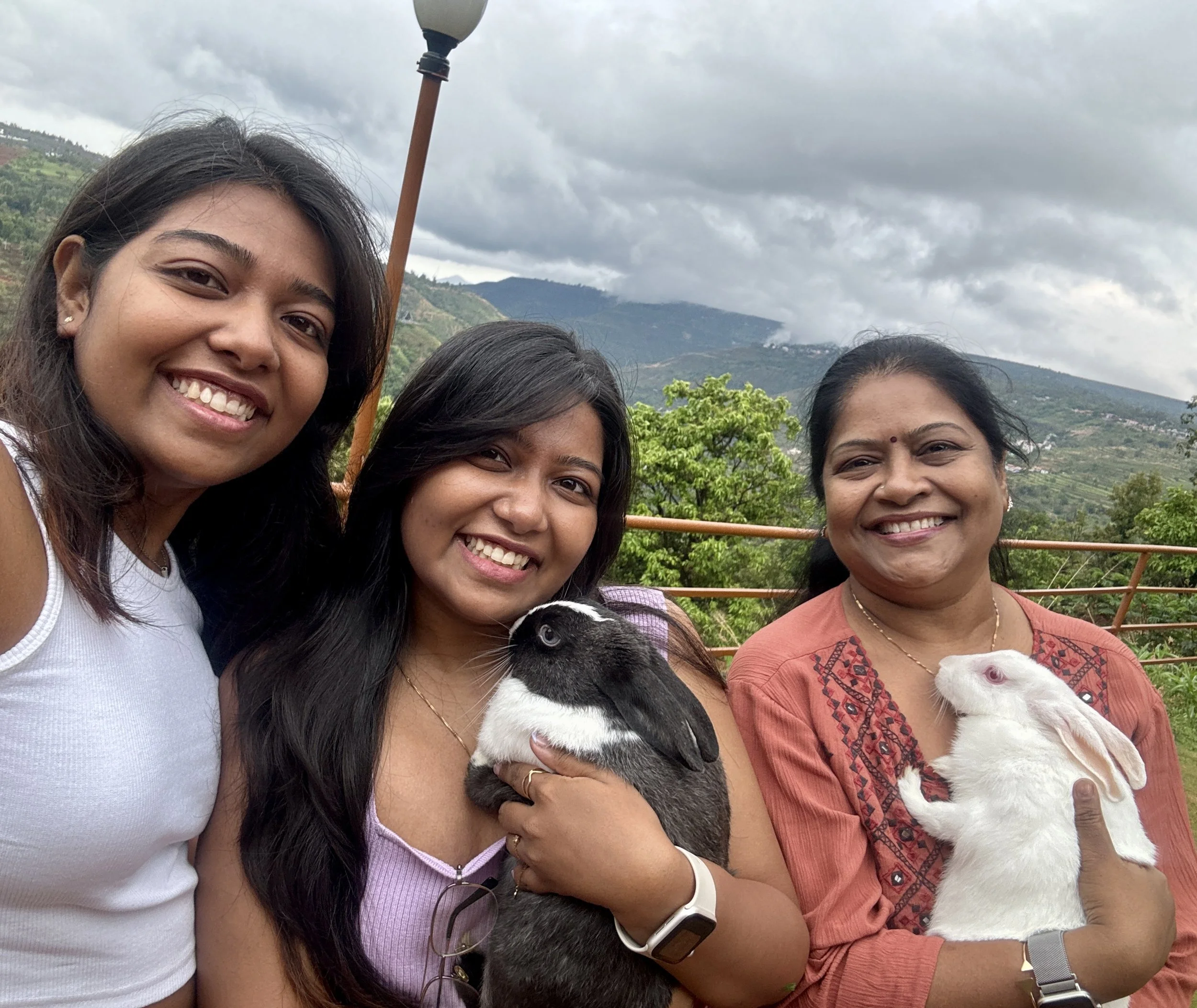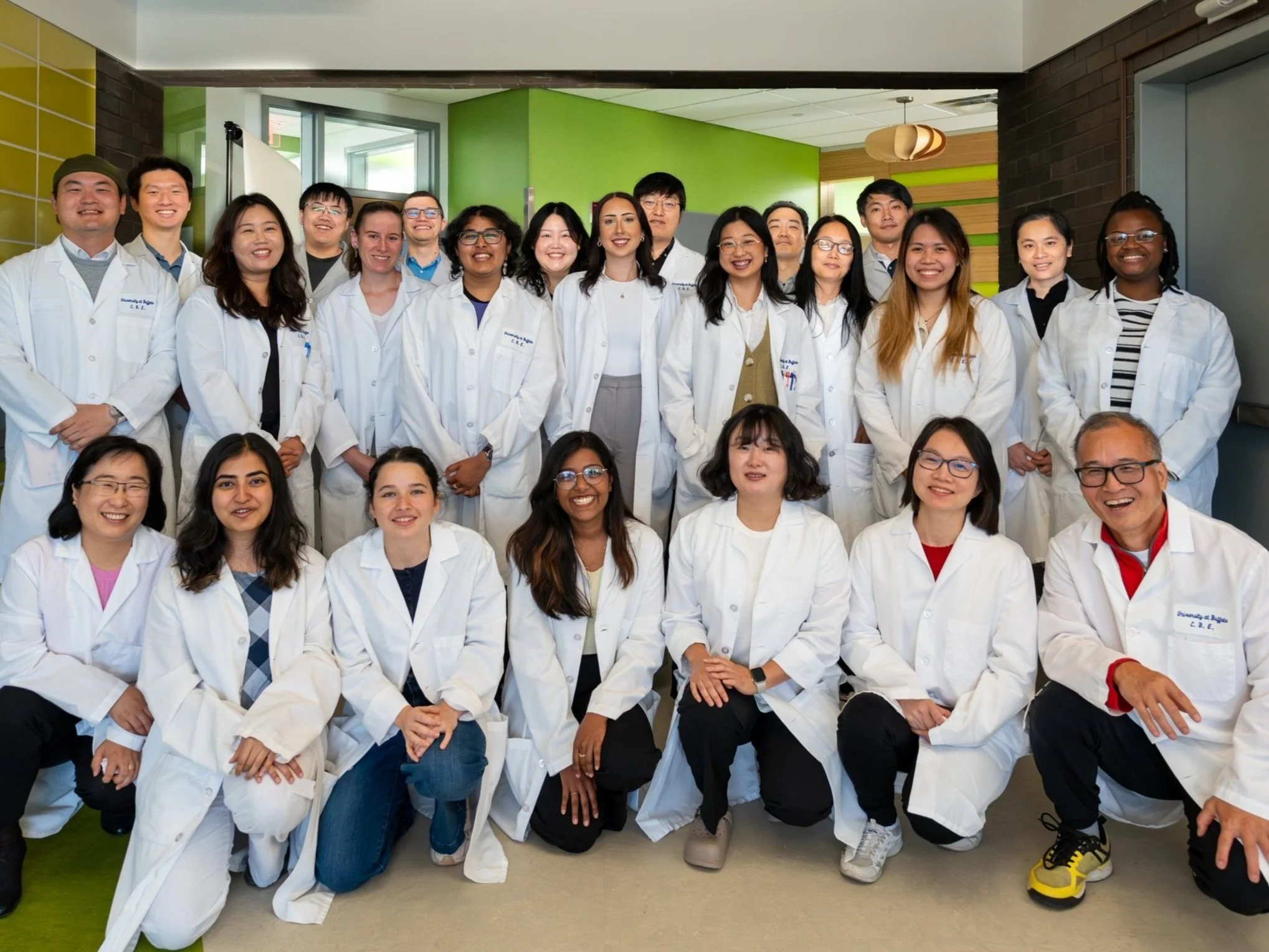Soumya Pal’s Path to FOXG1 Research in Buffalo
Soumya at her MS Graduation ceremony in 2025
At the FOXG1 Research Center (FRC), every scientist brings a unique story of curiosity, dedication, and purpose. For Soumya, a graduate student originally from India, that story began with a fascination for the human brain and a determination to pursue research that could one day improve the lives of families affected by FOXG1 syndrome.
FOXG1 syndrome is a rare neurological disorder caused by mutations in the FOXG1 gene, a key player in brain development. Children living with the condition face a wide range of challenges, including developmental delays, seizures, and motor difficulties. Each discovery in the field of FOXG1 research is a step toward meaningful therapies, and Soumya’s work is helping lay the foundation for that progress.
Soumya’s Research
Her research focuses on understanding not only the role FOXG1 plays in healthy brain development but also the mechanisms that regulate it. FOXG1 functions as a critical protein for neuron growth, yet many unanswered questions remain about what controls its activity. By studying microRNAs and other regulatory factors, Soumya is working to uncover the upstream processes that influence FOXG1 expression. This “step back” approach is essential, offering a broader picture that can guide the development of stronger and more precise therapies for FOXG1 syndrome.
Beyond the bench, Soumya’s connection to the work is strengthened by the families she has met through the Research Center. Encounters with FOXG1 children and their parents have given her a powerful sense of purpose, underscoring the direct impact her research could have. Their resilience and optimism fuel her determination to push forward, even when experiments fall into the uncertain “gray zones” that are an inevitable part of science.
For Soumya, research is not just about collecting data—it is about advancing knowledge, supporting families, and contributing to a future where FOXG1 children can live healthier, fuller lives.
Soumya’s Path to FOXG1 Research Center
Soumya’s journey into science began in high school, when she was first introduced to the field of biotechnology. What started as curiosity quickly grew into a passion for understanding the intricate ways cells and genes shape life. By the time she reached her undergraduate studies, she realized that while she once imagined herself becoming a doctor, her true calling was different. She was captivated not by clinical practice, but by the mysteries of the brain itself. Neuroscience became her focus, and she saw biotechnology as the key to unlocking its secrets.
With this new sense of purpose, Soumya set her sights on pursuing studies in the United States, determined to find a lab that aligned with both her scientific interests and her values. In her search, she discovered the work of Professors Jae and Soo Lee at the University at Buffalo. Their research on FOXG1 immediately stood out, but what struck her even more was the way they approached science.
The Lee’s Make an Impact
Unlike many research environments, the Lees framed their work not only in terms of data and discovery but in terms of its human meaning. Soumya often reflects on how hearing Jae Lee speak about FOXG1 research was a turning point—he had a way of humanizing the science, reminding his students that behind every experiment were families and children waiting for answers. This perspective resonated deeply with her, setting their lab apart from others she had encountered.
The decision to join the Lees was not just about finding a place to conduct research; it was about joining a mission. For Soumya, being part of their lab meant becoming part of a team that values both scientific rigor and compassion. That combination—cutting-edge research grounded in human connection—is what drew her to Buffalo and continues to inspire her as part of the FOXG1 Research Center today.
Life in Buffalo and in the Lab
Transitioning from a tropical climate to the snowy winters of Buffalo was no small adjustment, but Soumya has embraced both the challenges and the opportunities of her new home. What has stood out most is the supportive and enthusiastic culture within the FOXG1 Research Center. Unlike many research environments, the lab encourages learning from setbacks and views failures as valuable opportunities for growth.
In addition to her own projects, Soumya mentors undergraduate students. While she discovered early on that she did not enjoy teaching in a traditional classroom setting, she found that explaining complex ideas to others helped sharpen her own understanding and made her a stronger researcher.
The Human Side of Research
For Soumya, the work she does at the bench is inseparable from the people it ultimately serves. The opening day of the FOXG1 Research Center was especially memorable: families traveled to Buffalo to see the lab that was dedicated to their children’s future, and Soumya felt, for the first time, the weight of what it means to contribute to research with such direct human impact. It was a defining moment that transformed FOXG1 from a subject of study into a shared mission.
That sense of connection has only grown stronger. Meeting Tessa, a child with FOXG1 syndrome, left a lasting impression on her. Tessa’s warmth and joy, and the gratitude expressed by her family, made the science deeply personal. Soon after, another family reached out to Soumya directly, and their optimism gave her fresh perspective. She began to understand that, while research is often slow and filled with uncertainty, families see progress as hope. Their encouragement helps carry her through the inevitable challenges of experiments that sometimes succeed and sometimes fall into what she calls the “gray zone.”
These encounters remind Soumya that her work is more than data points and lab reports—it is part of a much larger story that belongs to every FOXG1 family. They reinforce why persistence matters, even on the hardest days, and why each small step forward in the lab has the potential to ripple outward into something much greater.
Looking Ahead at FOXG1 Research
Soumya is optimistic about the future of FOXG1 research. She sees tremendous promise in ongoing projects such as AAV9 gene therapy, which has already shown encouraging results in mouse models. Her own work—focused on uncovering the regulatory mechanisms of FOXG1—adds another vital piece to the puzzle. By deepening scientific understanding of how FOXG1 is controlled, her research could help shape more comprehensive therapies in the years ahead.
Though research is often filled with challenges and uncertainties, Soumya’s dedication reflects the greater mission of the FOXG1 Research Center: to transform knowledge into meaningful treatments and brighter futures for children and families living with FOXG1 syndrome.
Soumya and her family in India in summer 2024
FOXG1 Research Center is dedicated to understanding and finding treatments for FOXG1 syndrome and other neurodevelopmental disorders.
Our Team
Drs. Soo-Kyung Lee, PhD. and Jae W. Lee, PhD. are the principal investigators of FOXG1 Research Center. Our team is full of dedicated individuals with the common goal of studying FOXG1 Syndrome to find treatment options and further understand the condition.
Our Publications
To learn more details about our research, please refer to our publications.





